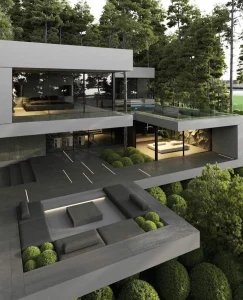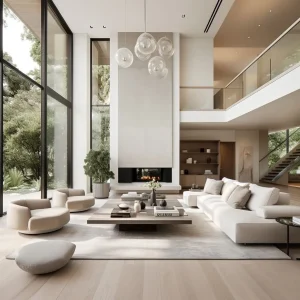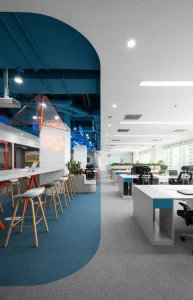Smart and Digital Spaces in Contemporary Architecture
Introduction: When Architecture Becomes Smart
Architecture has always been a response to human needs. Today, those needs go beyond shelter or aesthetics. Modern users expect spaces to be interactive, sustainable, and digital. Smart and digital spaces in contemporary architecture integrate technology seamlessly with everyday life.
What Are Smart and Digital Spaces?
Smart spaces are designed with IoT, artificial intelligence, sensors, and real-time data to respond intelligently to users’ needs. They can sense, analyze, and act based on the environment.
Digital spaces use digital technology as a core element, from online learning environments to fully connected urban infrastructures.
Smart Architecture: Blending Aesthetics and Technology
Smart architecture combines beauty and functionality. The goal is to create spaces that are not only visually appealing but also flexible, sustainable, and user-centered. By integrating technology, architects can enhance comfort, efficiency, and overall experience.
Applications of Smart Spaces in Architecture
1. Smart Homes
- Automated control of lighting, temperature, and security
- Smart glass windows to adjust natural light
- Flexible layouts designed for seamless technology integration
2. Digital Workspaces
- Smart desk reservation systems
- Digital conference rooms with integrated audio-visual technology
- Flexible layouts supporting both in-person and remote collaboration
3. Smart Cities
- Responsive urban lighting systems
- Smart public transport stations
- Digital urban furniture designed for citizen comfort
4. Educational and Healthcare Spaces
- Smart schools with digital learning tools
- Digital hospitals with real-time patient monitoring
- Designs integrating both online and physical accessibility
Benefits of Smart and Digital Architecture
- Energy efficiency and sustainability: Reduces resource consumption.
- Enhanced safety and security: Protects users with smart systems.
- Improved user experience: Spaces adapt to individual needs.
- Higher productivity: Optimizes work and living environments.
Challenges of Smart Architecture
- Implementation and maintenance costs
- Balancing aesthetics with technology
- Cybersecurity and privacy concerns
- Need for training and cultural adaptation
The Future of Architecture: From Traditional to Digital
Smart and digital spaces are no longer optional—they are becoming the standard in contemporary architecture. Architects must balance beauty, functionality, and technology to create meaningful, sustainable environments.
Conclusion
The future of architecture lies in smart, sustainable, and digital spaces. Smart homes, digital workspaces, and connected cities demonstrate that architecture is evolving to meet both human needs and technological possibilities.








One Response
Loved this post،super useful, thanks a lot🙏